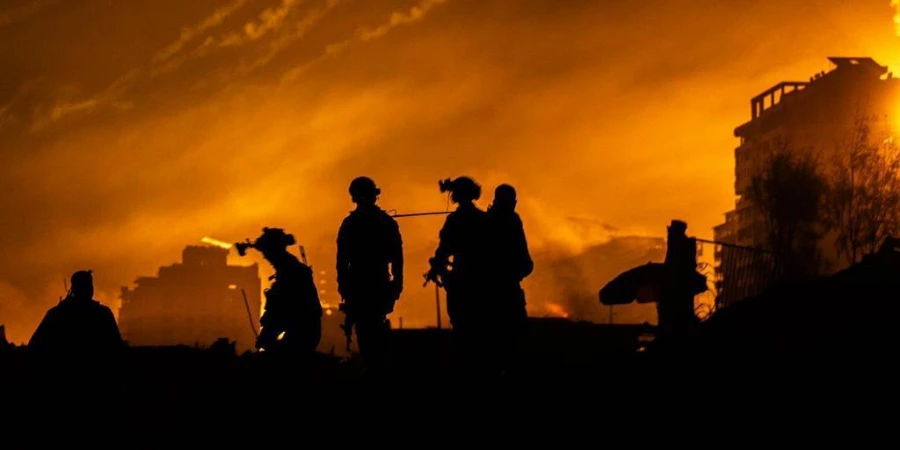In September 2000, the Al-Aqsa Intifada erupted, marking a significant turning point in the Israeli-Palestinian conflict. Following the rejection of a generous Israeli offer for a two-state solution at Camp David, the Palestinians, led by Yasser Arafat, resorted to terror tactics in pursuit of further concessions. The widespread uprising and brutal terror campaign within Israeli cities presented a novel challenge unlike any faced by Israel before. It lasted five years and claimed the lives of more than 1,000 Israelis.
In its first decades of existence, the Israel Defense Forces (IDF) engaged in battles against neighboring countries’ armored divisions and air forces. In the 1980s and 1990s the dynamics shifted, with the IDF contending with guerrilla warfare in Lebanon and confrontations with knife-wielding attackers and Molotov cocktail throwers in the West Bank and Gaza. The Al-Aqsa Intifada, spanning from 2000 to 2005, marked a new phase where the IDF confronted an enemy deeply embedded within civilian populations, launching near-daily suicide attacks targeting Israeli civilians.
This conflict represented a departure from conventional warfare, as the IDF shifted its focus from targeting enemy bases, armored vehicles, and airstrips to identifying lone individuals and hidden explosive labs – a needle in a haystack. Moreover, terror organizations operated without centralized leadership or strategic assets, further complicating IDF efforts.
In addition to operational challenges, Israel faced mounting scrutiny over the legitimacy of its military actions, both domestically and internationally. Despite enduring thousands of terror attacks and hundreds of civilian casualties during the Al-Aqsa Intifada, there was initial hesitation among the Israeli public to engage in full-scale conflict across the Palestinian territories.
This reluctance towards military action mirrored broader societal shifts in Israel, reminiscent of trends observed in the United States, towards individualism and materialism. Consequently, there emerged a heightened sensitivity towards military casualties, with many Israelis placing greater value on the lives of soldiers over civilians, thereby compromising the IDF’s combat readiness.
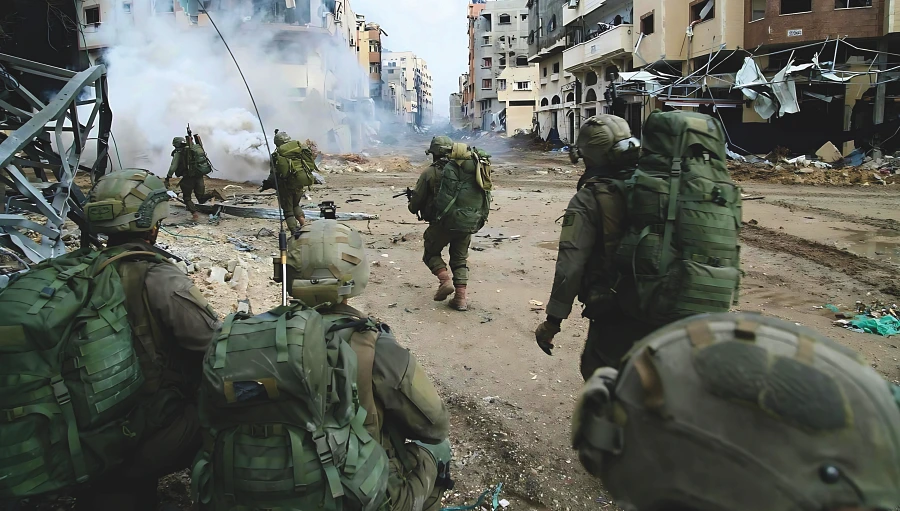
If we look at the situation in terms of a problem and a solution, the convergence of operational complexities, legitimacy constraints, and aversion to casualties created a multifaceted challenge for Israel. It drove a widening disparity between what the IDF was expected to achieve – security through enemy destruction and its operational capabilities – and what it was able to deliver. And like that, faced with a weaker enemy who perceived survival as victory, the formidable IDF found itself navigating an increasingly constrained battlefield.
The Security triad challenged
Israel, initially a small country, faced existential threats from its inception. To ensure its survival, Israel’s national security doctrine rested upon the pillars of deterrence, early warning, and decisive victory. This doctrine necessitated Israel to project strength sufficient to deter aggression, maintain vigilant intelligence to anticipate and thwart attacks, and, if necessary, achieve decisive victories to reaffirm its deterrence capabilities.
However, these principles were severely tested in the conflict against terror organizations. The Israel Defense Forces (IDF) struggled to deter adversaries indifferent to conventional deterrence mechanisms, faced challenges in early warning systems ill-suited to detect lone assailants, and experienced difficulties in achieving decisive victories against decentralized foes over three decades filled with fighting.
Societal shifts and escalating complexity led the political and defense establishments to adopt a more conservative stance, abandoning full-scale warfare in favor of defensive strategies and containment measures. Since the dawn of the new century, successive Israeli governments have prioritized defense investments and restrained offensive operations, opting to contain rather than eliminate military threats and maintain the status quo.
Consequently, Israel’s security doctrine underwent a significant transformation, shifting from a focus on deterrence, early warning, and decisive victory to prioritizing defense, containment, and avoidance in response to evolving security challenges.
Reimagining the Battlefield
To propose a viable solution, the IDF underwent a significant transformation, redefining traditional combat principles and adopting innovative technological advancements and tactics.
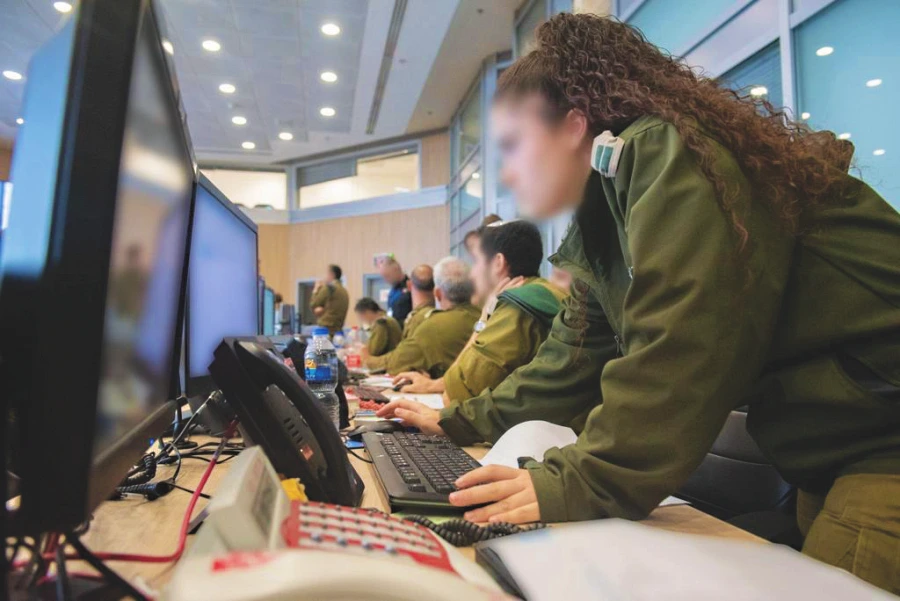
Combat dynamics shifted dramatically, as the IDF grappled with an adversary adept at concealment. Gone were the days of open-field battles between infantry and armored divisions; instead, combat evolved into a relentless game of cat and mouse, pitting the IDF, armed with state-of-the-art military technology, against clandestine terrorists operating in the shadows.
The objectives of traditional combat principles underwent a significant shift. Previously, intelligence was gathered to plan maneuvers into enemy territory; now, forces maneuver into densely populated areas to gather intelligence. Where once military victory meant conquering enemy territory, today, it means neutralizing hidden threats within it. Furthermore, whereas identifying enemies on the battlefield was once straightforward, today, anyone present is considered an uninvolved civilian until proven otherwise.
Meeting this formidable challenge demanded a concerted effort, blending diverse capabilities from various units. This included deploying a vast array of human and technological sensors to provide real-time, high-resolution intelligence, employing advanced command and control systems to maintain a dynamic battlefield picture, and utilizing fire management systems to prioritize and allocate resources effectively.
Executing strikes required precision and agility, especially when targeting moving threats within populated areas. Each strike carried the risk of collateral damage, necessitating careful consideration and operational planning to minimize unintended harm.
The pace of operations has accelerated dramatically. In this day and age, the IDF must complete the entire targeting cycle – from identification to execution – something in a matter of seconds. By comparison, during the Gulf War in 1991, the U.S. took approximately 36 hours to gather and process intelligence before launching attacks. The demands placed on the IDF in conflicts like the current war in Gaza far exceed previous benchmarks, requiring unprecedented levels of performance and precision.
Network-centric warfare
The IDF’s approach to addressing this challenge integrates two prominent concepts in Western warfare: Network-Centric Warfare, which emphasizes the collection and dissemination of information among all forces within the operational theater, and Jointness, which underscores the collaboration among various units across different branches to maximize operational efficiency.
Observers of the conflicts in the Gaza Strip are likely familiar with the term “Brigade battlegroup.” This term refers to a unified unit structure that incorporates armor, infantry, engineering, and special forces, complemented by close air and naval support, all operating under a unified command. This combat formation enables the synergistic utilization of each unit’s capabilities – from long-range target engagement using airpower or artillery, to armored units breaching defensive lines, to infantry clearing remaining threats, and engineering units neutralizing tunnels and infrastructure to achieve comprehensive objectives.
The successful ground maneuvers conducted by the IDF in the Gaza Strip owe much to this inter-unit and inter-branch cooperation. John Spencer, Chair of Urban Warfare Studies at West Point, noted in late January that the IDF’s ground advancement rate, both over and under the ground, was historically rapid and achieved with relatively low casualties. Such performance is particularly remarkable given the unprecedented nature of the challenges faced by the IDF, unparalleled in modern military history.
The IDF’s joint operational capabilities have evolved steadily over the past generation. The seamless coordination between air and ground forces witnessed today is the culmination of evolving capabilities and accumulated experience since the early 2000s, notably during the al-Aqsa Intifada. During that conflict, ground forces and air force attack helicopters began collaborating, providing aerial intelligence and fire support. This collaboration reached new heights during Operation Defensive Shield in the spring of 2002, the most extensive and successful operation in the West Bank. Forces worked in tandem to pursue terrorists with remarkable success. Notably, the volume of air-to-ground attacks conducted by helicopters during the six-week Defensive Shield operation surpassed any previous Israeli war.
The Digital Land Army
Effective inter-branch cooperation necessitates advanced command and control platforms. The development of counter-commercial technology found military applications as well: computers became increasingly mobile, lightweight, and cost-effective; interfaces became more intuitive and user-friendly; communications systems improved in reliability and security; and processing power experienced annual doubling.
Over the past two decades, the IDF has introduced a diverse array of new systems utilized by command echelons ranging from the General Staff to tactical units in the field. These systems address unit operations, firepower application, intelligence gathering, and logistics management essential for overall operational effectiveness. While some of these systems have been publicly disclosed, the majority remain classified.
At the core of the IDF’s ground warfare transformation lies the “Digital Land Army” project, known by its Hebrew acronym “Hunter.” With an estimated investment of 20 billion shekels ($5 billion) to date, development of this platform commenced in 2001. The objective is to receive encrypted data from all ground units, intelligence sources, and UAVs for a comprehensive, real-time battlefield assessment. Every unit, from soldiers in outposts to tank commanders, is equipped with screens displaying terrain analysis, real-time movement of friendly and hostile forces, intelligence updates, and orders. Two-way communication enables rapid dissemination of enemy movements and target allocation, significantly enhancing operational capabilities.
During the 2006 Lebanon War, the “Hunter” system was only available in select tanks and APCs, with senior officers equipped with handheld devices connected to the network. However, many forces only received access to the system later in the conflict and lacked sufficient training, leading to frustration due to usability issues. While the system had limited direct impact on tactical units, its influence on senior commanders, particularly brigade commanders, was significant, albeit negative—some preferred to remain in command centers rather than lead troops in battle. This departure from the IDF’s traditional ethos of commanders leading from the front garnered criticism post-war.
From Jointness to Multidimensionality
During subsequent rounds of conflict following the 2006 Lebanon War, upgraded iterations of various Hunter components were introduced, allowing forces to accumulate experience and enhance effectiveness. A pivotal test occurred during 2014’s Operation Protective Edge, where the new systems were fully integrated across the military, significantly augmenting land force lethality. For instance, Armored Brigade 401, the first unit fully outfitted with Hunter command and control systems alongside Trophy Active Protection Systems shielding tanks from anti-tank missiles, featured personal displays for every crew member. These displays provided real-time information on the location of friendly and hostile forces, alongside intelligence updates and orders.
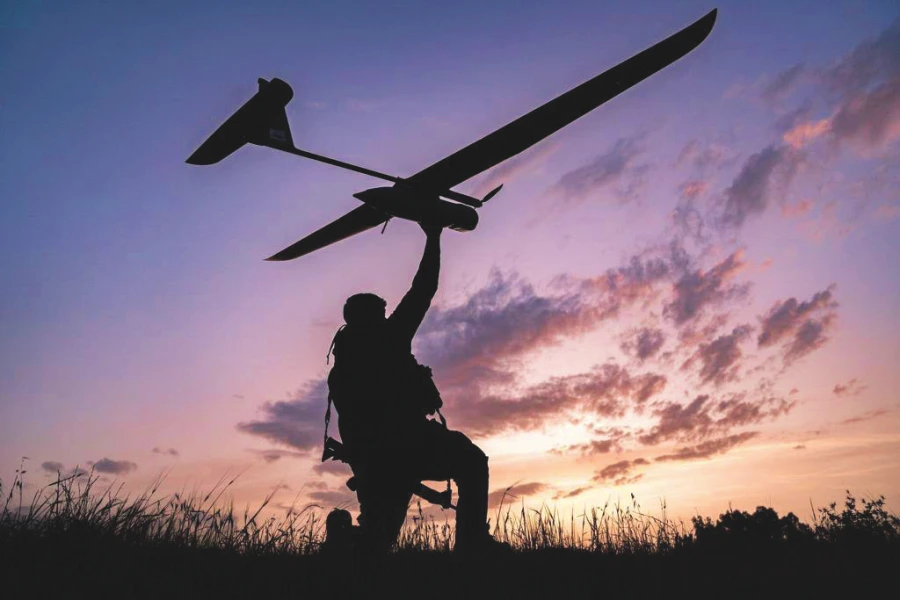
Major General Sa’ar Tzur, former commander of Armored Brigade 401 during Protective Edge and current Commander of the Northern Corps and Head of the IDF’s Maneuver Branch, lauded the Hunter system post-operation: “As brigade commander I know at every given moment where each tank is located, which direction its gun barrel is aimed at, where it’s moving towards. The command, control and communications are perfect. The entire sector is displayed before the eyes of the commander, loader, gunner – each one has his own screen… The gunner needs only to touch a designated target on the screen, that’s enough to automatically aim the gun at it, calculate range, everything automatically – within seconds. The first-round shot hits its target 90% of the time… The whole story of old target acquisition and identification is over. There’s no more need for it. Everything is identified, crystal clear to all, there’s also no need to climb observation posts to observe. Everything is pre-observed and fed into the system.”
Each iteration of the Hunter platform introduced enhancements in user interface, communications, and data integration capabilities. Notably, subsequent versions expanded deployment from brigade to company commander levels, democratizing access to critical operational insights and capabilities.
Following the success of Operation Protective Edge, the debate on the potential of joint operations was settled. Former Chiefs of Staff Gadi Eisenkot and Aviv Kochavi, who commanded the IDF between 2015 to 2023, prioritized investments in multi-year programs aimed at enhancing maneuver capabilities and fostering jointness across the IDF. This shift included institutionalizing permanent cooperation among units and embracing a multidimensional approach to warfare.
One of the key changes was a shift from ad-hoc combined inter-unit training and co-operation during operations, to institutionalizing permanent co-operation, giving rise to a new term – multidimensionality. Aviv Kochavi outlined the principles of his program in a 2021 public address: “All the IDF’s traditional concepts still apply… However, because the enemy dispersed itself so extensively and holds rockets capable of hitting the home front, we must expose, attack and destroy it extensively. How can we make such a widespread effort more efficient? By adopting advanced technologies and new combat tactics… Far more real-time intelligence for all forces, far more weapons systems, greatly improved capabilities for combat units and digitally driven processes enabling more effective targeting cycles… We’re in the midst of a digital transformation… connecting everyone to everyone.”
The Ghost Unit
To advance the multidimensional concept, the IDF established several specialized units. Among these, the 99th Division emerged as a rapidly maneuvering task force specializing in urban warfare. Comprising two infantry brigades, one armored brigade, and one commando brigade reallocated from existing formations, the division’s capabilities were further augmented by the addition of a new unit known as “the Multidimensional Unit,” informally referred to as The Ghost Unit. This commando unit draws its personnel from various branches, including the Israel Air Force, Intelligence Corps, paratroopers, elite SWAT, artillery, armor, and infantry, embodying a diverse array of expertise. Equipped with cutting-edge technologies such as observation gear, loitering munitions, and robots, the unit serves as a model for innovative combat methods.
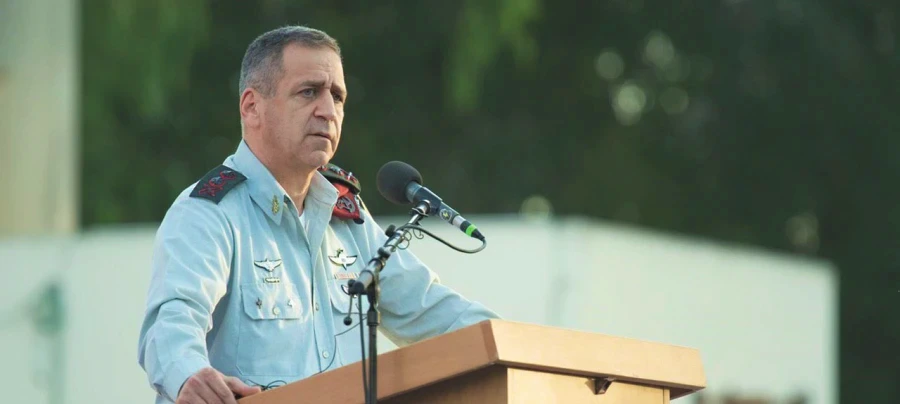
Tragically, the bloody October 7 attack inflicted heavy casualties on the Multidimensional Unit, with Unit Commander Lt. Col Roi Levi and three other officers and soldiers killed in action. Despite these losses, the unit perseveres, currently engaged in its inaugural combat operation within Gaza as part of the ground maneuver. Employing a range of classified capabilities, including the recently disclosed “Rhino” loitering munition for precision aerial strikes and the “Iron Sting” precision mortar shell developed by Elbit, the unit demonstrates its adaptability and effectiveness on the battlefield.
Traditional mortar shells are one of the least accurate weapons ever invented, and even at close range are often left at the mercy of shifting winds. Iron Sting is a precision mortar capable of both GPS navigation onto target and laser guidance. The new round entered use for the first time in the current fighting, employed by the Multidimensional Unit and Maglan special forces.
As the ground maneuver unfolds, additional information emerges regarding new weapon systems and combat methods devised by forces to counter urban ambushes and tunnel threats. From bunker-busting bombs deployed by fighter jets to suicide drones and tunnel-deployed attack drones, as well as advancements like powerful anti-tank missiles and the SMASH handheld, a smart AI-driven fire-control system mounted on assault rifles that is able to track moving and flying targets. These innovations significantly enhance offensive operation effectiveness despite operational constraints.
The events of October 7 underscored the inadequacy of the IDF’s defensive concept, signaling the need for comprehensive reassessment post-conflict. In contrast, the success of the new offensive approach and emphasis on jointness demonstrates its efficacy. Anticipated increases in defense budget allocations are poised to further empower and expand platforms and units, enabling concurrent operations on multiple fronts and reinforcing deterrence capabilities. If and when achieved, the IDF will again stand ready to decisively defeat any adversary, affirming its commitment to national security and defense. If only the political leadership orders it to do so.
What Happens When The Hunter becomes the Hunted?
The IDF’s increasing reliance on computer-based systems also heightens the risk – what if the enemy manages to breach the network? In theory, breaching a Client/Server architecture is possible either on the server side where the system operates or on any of the clients connected to it. On October 7, concerns arose on multiple fronts: Terrorists seized control of several army vehicles, driving them into Gaza. They also abducted several soldiers who could potentially be coerced into accessing the system.
Simultaneously, reports emerged that Hamas attempted to breach Unit 8200’s classified base on the same day. According to the report, terrorists were focused on gaining access to a secret hosting facility housing classified servers. While the IDF has not publicly disclosed the exact intentions of the terrorists at the base, they hinted that the attempt was thwarted.
The potential consequences of breaching the IDF’s central command and control system could be catastrophic. Breaching a client receiving all information could enable the enemy to track all forces and learn all IDF combat methods. Breaching on the server side could theoretically allow hostile actors to disrupt or compromise the system, deceive IDF forces by providing false information, and more.
Addressing such security challenges requires a two-pronged approach: First, security administrators must diligently manage access from each device, disconnecting or restricting data flow from compromised equipment. Physical intrusions into hosting facilities may necessitate a reassessment of not only the facility’s physical security but also the wisdom of hosting critical servers relatively close to Israel’s border. Moreover, efforts must be made to maintain jointness capabilities even if the communication system is compromised. In the aftermath of conflict, it is crucial to remember that the Digital Land Army is, above all, an army first and digital second.

